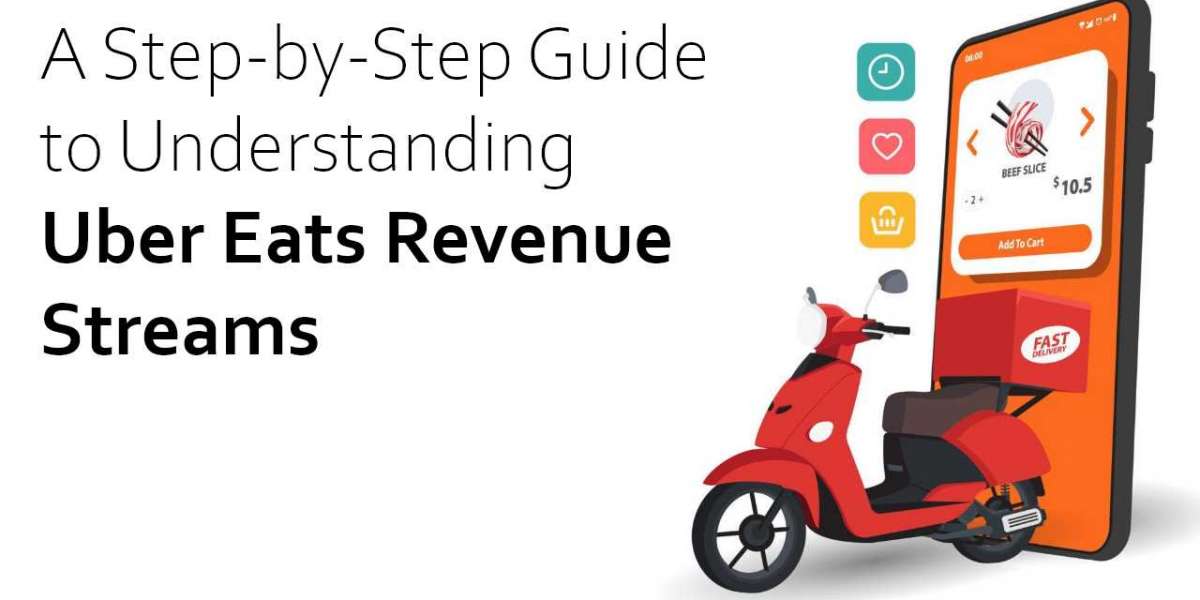Uber Eats has emerged as a dominant force in the online food delivery industry, capitalizing on its innovative business model and diverse revenue streams. For entrepreneurs and industry observers, understanding how Uber Eats business model generates revenue can provide valuable insights into the mechanics of the food delivery business. This article offers a detailed, step-by-step guide to comprehending Uber Eats' revenue streams, shedding light on how the platform sustains its operations and drives profitability.
1. Commission Fees from Restaurants
One of the primary revenue streams for Uber Eats is the commission fee it charges restaurants. When a restaurant partners with Uber Eats, it pays a percentage of each order placed through the platform. This commission typically ranges from 15% to 30% of the total order amount, depending on various factors such as the restaurant’s size, location, and contract terms.
The commission fee model benefits both parties: restaurants gain access to a larger customer base and increased visibility, while Uber Eats earns a steady income from each transaction. This revenue stream is crucial for Uber Eats, as it provides a significant portion of the platform’s overall income. To maximize revenue, Uber Eats continually seeks to expand its restaurant partnerships, offering diverse dining options to attract more users and drive up order volumes.
2. Delivery Fees
Another significant revenue stream for Uber Eats is the delivery fee charged to customers. When users place an order through the app, they pay a delivery fee, which varies based on factors such as distance, demand, and time of day. This fee is typically added to the total order cost and is visible to the customer before they confirm their purchase.
Delivery fees contribute to Uber Eats’ revenue by providing an additional income source beyond restaurant commissions. The platform’s dynamic pricing model allows it to adjust delivery fees in real-time based on demand and other variables. For example, during peak times or in high-demand areas, delivery fees may increase to reflect the higher cost of providing the service. This flexibility helps Uber Eats optimize its revenue while balancing customer expectations and operational costs.
3. Service Fees
In addition to commission and delivery fees, Uber Eats generates revenue through service fees. Service fees are typically charged to customers and cover the costs associated with processing payments, maintaining the app, and providing customer support. These fees are often a percentage of the total order value or a flat rate added to the order total.
Service fees help Uber Eats offset operational expenses and ensure the platform remains sustainable. By integrating service fees into the overall pricing structure, Uber Eats can provide a seamless experience for users while covering essential costs associated with running the service.
4. Advertising and Promotional Partnerships
Uber Eats also monetizes its platform through advertising and promotional partnerships. Restaurants can pay for premium placement or visibility within the app, such as featured listings or sponsored promotions. These advertising opportunities allow restaurants to increase their visibility and attract more orders, while Uber Eats generates additional revenue from these promotional fees.
Promotional partnerships may also include collaborations with brands or events. For instance, Uber Eats might partner with food festivals or product launches, leveraging its platform to promote these events and generate revenue through sponsorships or cross-promotional deals. These partnerships provide an extra revenue stream and enhance the platform’s overall appeal.
5. Subscription Services
Uber Eats revenue model app offers subscription services, such as Uber Eats Pass, which provides customers with benefits like free delivery on eligible orders, reduced service fees, and special promotions. Subscribers pay a monthly or annual fee for these benefits, generating a recurring revenue stream for Uber Eats.
Subscription services encourage customer loyalty and increase order frequency by providing added value. They also offer predictable revenue for Uber Eats, helping to stabilize cash flow and support long-term growth. By continuously enhancing the value proposition of its subscription services, Uber Eats can attract and retain subscribers, driving further revenue.
Conclusion
Understanding Uber Eats’ revenue streams provides a comprehensive view of how the platform sustains its operations and drives profitability. From commission fees and delivery charges to service fees, advertising partnerships, and subscription services, Uber Eats has developed a diverse revenue model that supports its growth and expansion. By analyzing these revenue streams, entrepreneurs and industry observers can gain insights into the dynamics of the food delivery business and apply these lessons to their own ventures. Whether you’re looking to launch a new delivery service or simply want to understand the mechanics behind successful platforms, exploring Uber Eats’ revenue model offers valuable perspectives on the industry’s financial landscape.






